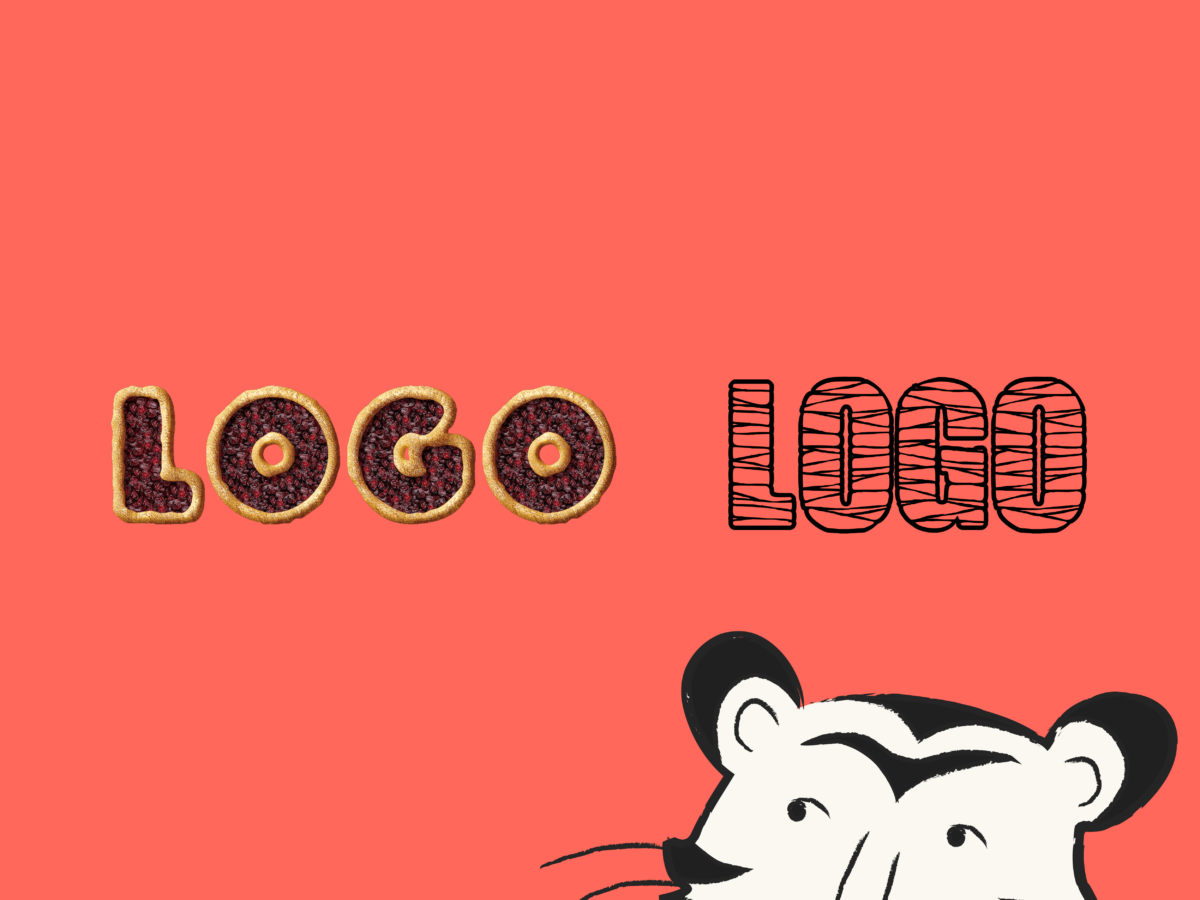Is your branding looking drab and dull? If the answer is yes, then that could be a major problem in the current competitive landscape. After all, it takes consumers about two-tenths of a second to make a snap judgment about your brand.
However, do not fret, as a brand strategy workshop is a fantastic solution to solve your branding woes. These meetings are a creative outlet where your entire team, from brand strategists to stakeholders, can discuss every aspect of your brand’s vision, including:
- Demographics
- Core values
- Brand voice
- Business goals
- Brand purpose
So, whether you are a new brand or startup wanting to create a standout marketing strategy or an established business wanting to rebrand, then this blog is for you. Come with us as we look at the best branding workshop exercises to develop a brand persona guaranteed to entice your target audience.
Three pillars of a brand workshop
Throughout the duration of a branding workshop, the role of a consultant is to help the team explore three key pillars of brand design. These three pillars are detailed in the table below.
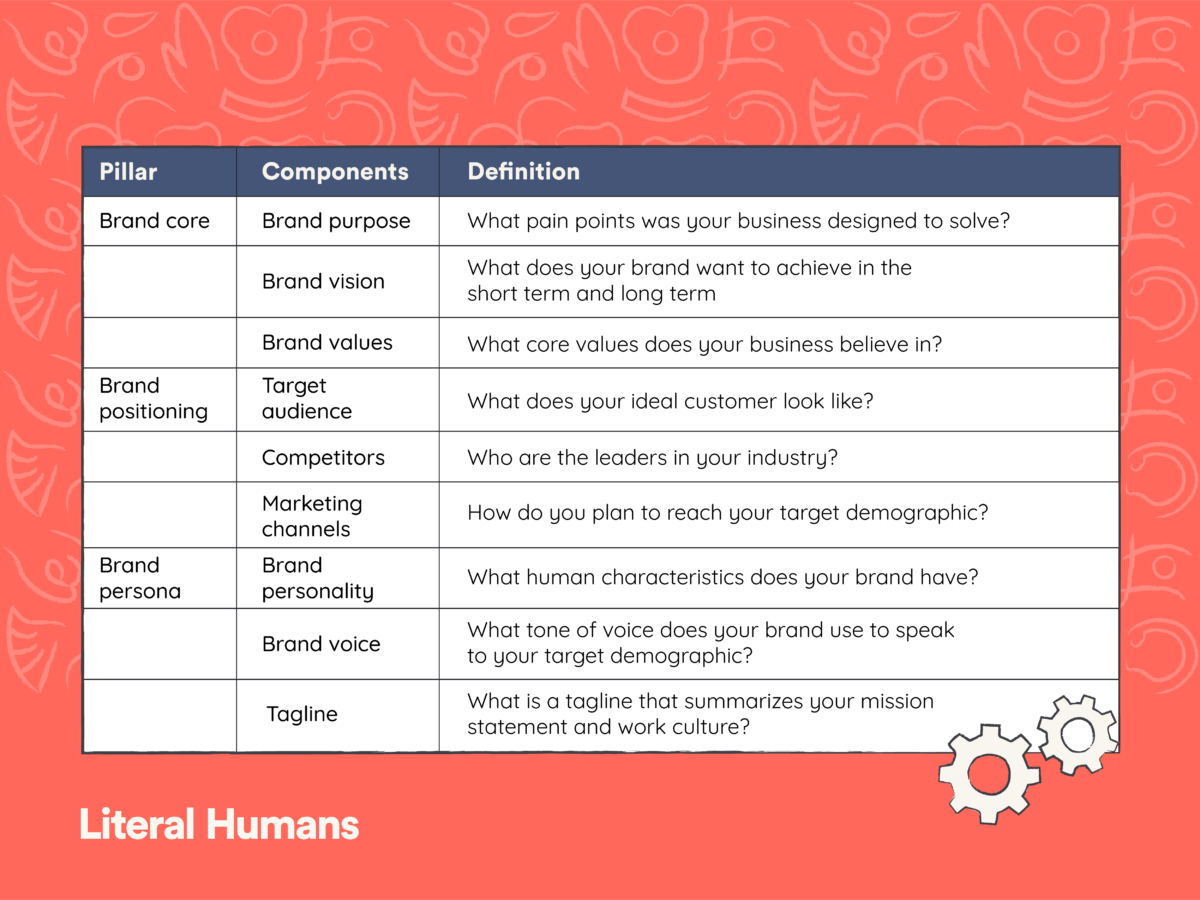
10 best branding workshop exercises
As a facilitator of an in-person or online workshop, providing engaging and highly interactive branding exercises is incredibly important. Here is our selection of the very best activities guaranteed to spark conversation, generate creative ideas, and solidify a successful positioning strategy.
1. Playing superheroes
It is a fact that all the best superheroes have an arch nemesis, Batman has The Joker, Spiderman has The Green Goblin, and Superman has Lex Luthor.

It is time to don your cape, flex those muscles, and call for backup because your brand is now an elite superhero team that is destined to rid the world of evil. But who or what will be your arch-nemesis?
As a team, come up with ‘the evils’ that your brand wants to eradicate from your industry.
Next, consider how your brand could thwart these villainous schemes from taking over the entire world.
For instance, a clothing brand could want to vanquish plus-size discrimination, unethical manufacturing, and escalating consumer pricing. Your brand could combat these issues by using plus-size models in marketing, thoroughly investigating your supply chain, and providing a fair pricing strategy.

what value you can provide to your consumers.
2. Ask those ‘stupid questions’
There is an old proverb that states, ‘There is no such thing as a stupid question.’ However, a recent study found that 70% of employees face barriers when asking questions in the workplace, including fear of rejection, concerns over irritating superiors, and being perceived as incompetent.
In this exercise, it is time to encourage your employees to ask the ‘stupid questions’ they would not dare ask during normal work hours. This task can be incredibly difficult, so remember to be encouraging and remind your team that there will be no judgment.
This is a brilliant icebreaker activity, boosting your team’s confidence by letting them know their opinion is always valid.
Furthermore, at these workshops, there is often a mixture of both senior and junior team members. This results in a collection of differing opinions and fresh insights that could shed new light on your branding strategy.
For instance, a newer member of staff could question why your current website is a garish shade of green. Admittedly, this could be due to an agreed color scheme; however, it also could be a relic from a former design team that serves little purpose and could be deterring potential customers.

3. Archetype association
Carl Jung, a Swiss psychiatrist, theorized that there were twelve archetypes that can summarize all human roles across every society and culture. These can be viewed in the below table.
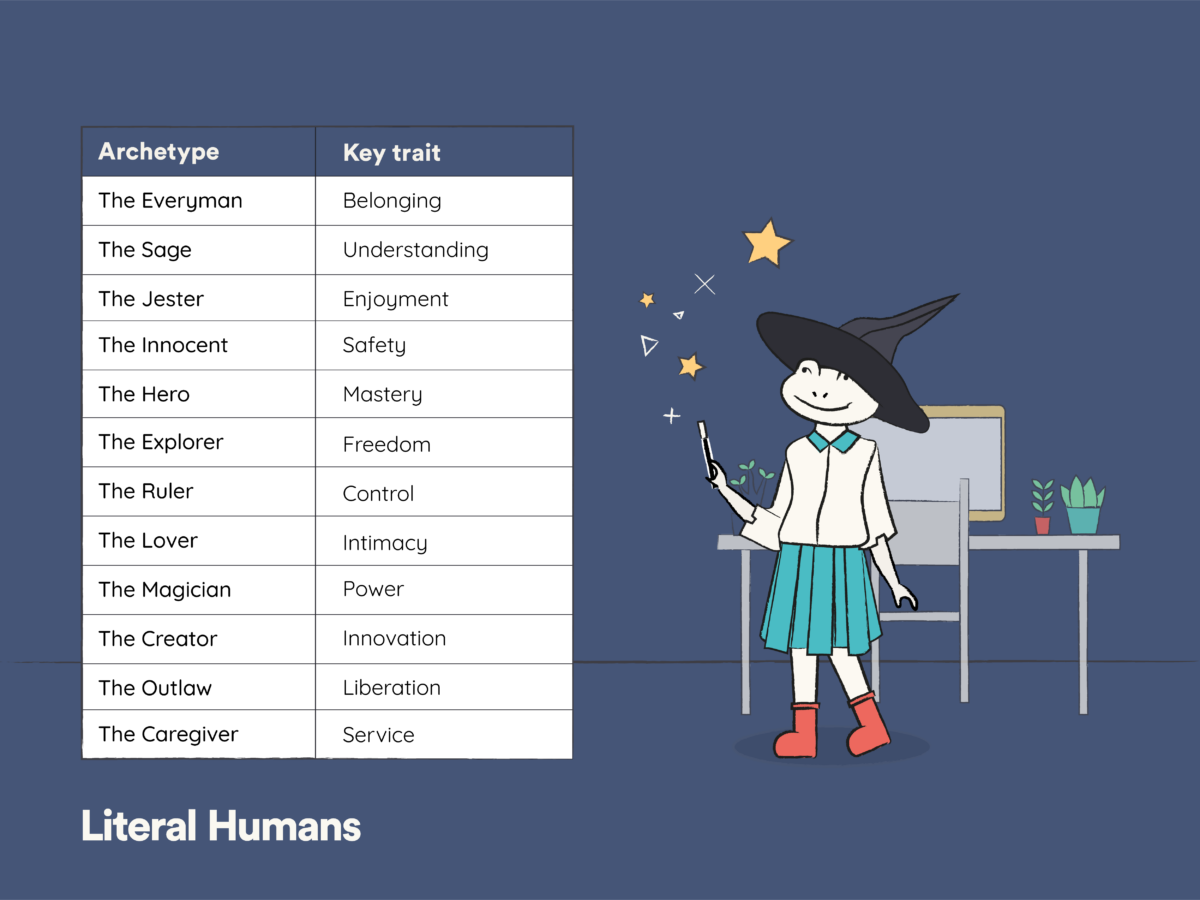
These archetypes have been used by many industry leaders to identify the human characteristics that reflect their brand, allowing them to create real connections with their customers.
We recommend that you spend some time establishing what archetype your brand is most associated with. To do this exercise, follow these simple step-by-step instructions:
- Write the twelve archetypes clearly on a whiteboard.
- Divide your team into breakout groups.
- Hand out sticky notes with the names of well-known brands on them.
- Allow the groups to discuss which archetype each brand belongs to.
- Ask each group to stick their brands under the relevant archetype.
- Bring the entire team together to discuss which archetype currently represents your brand identity.
- Finally, consider which archetype your team wants the business to embody in the future.
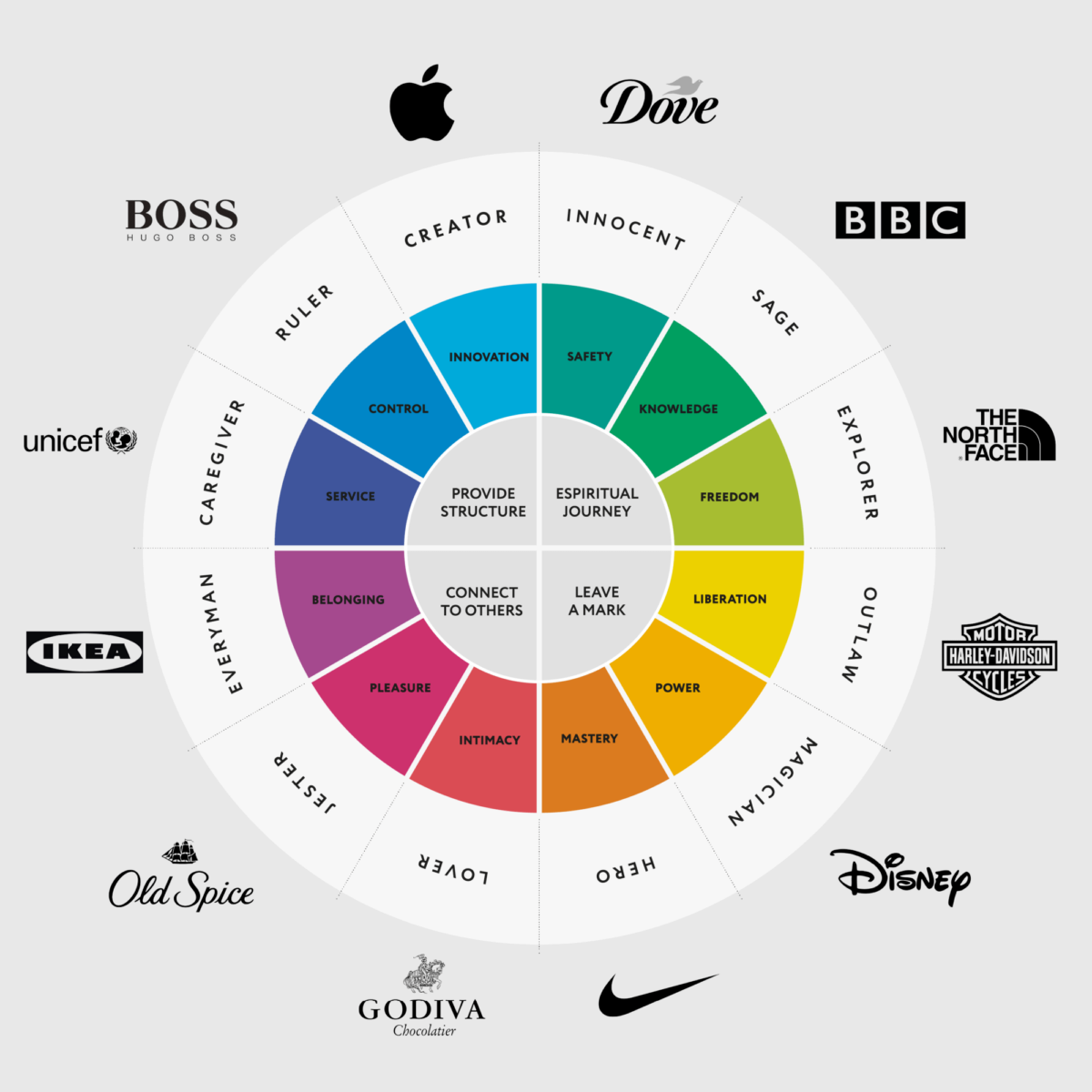
4. Brand haiku
This exercise is designed to encourage team members to explore the key elements of their brand through the form of haiku; participants can gain a deeper understanding of their brand’s identity and create a concise expression of its core values.
As a brief refresh on this unusual poetic form, the format of a haiku consists of three lines featuring the following syllable structure:
- 1st line: 5 syllables
- 2nd line: 7 syllables
- 3rd line: 5 syllables

Divide the team into breakout groups and challenge them to write a haiku that summarizes the brand’s core values.
Here is an example of a haiku for a business called ‘Eco-Dye’ that sells high-quality and environmentally friendly sourced hair dye products:
Eco-Dye’s vibrant hues,
Nature’s essence on your strands,
Gorgeous, eco-love.
5. Imagine your nightmare customer
We all know how important it is to define your dream buyer persona using multiple data sources. This ideal customer profile allows businesses to understand what their target demographic wants and needs from their brand.

As a fun twist on this activity, challenge your team to create your brand’s nightmare customer, an individual who would absolutely not want to engage with your product.

Ask the groups to think about the following criteria:
- Age
- Interests and hobbies
- Values and beliefs
- Income
- Geographic location
- Gender
- Goals
- Pain points
- Dislikes
- Education
- Profession
- Preferred marketing channel
Once you have discussed and identified the key traits of a nightmare customer, then it should be easy to start an open conversation about what your dream customer looks like. Use the image below as a template to map out your ideal buyer persona.

6. Name that logo
A recent study found that a logo is the single most important brand identifier for 75% of consumers. Coca-Cola is a fantastic illustration of this statistic, as 94% of the entire world population recognizes its logo.

In this exercise, we recommend selecting a wide selection of logos, both well-known and niche. Ask your team members to try and identify the brands behind the logo, and then discuss what elements of the design make it both eye-catching and memorable for consumers, including:
- Fonts
- Color scheme
- Imagery
- Layout

Now, with this knowledge in hand, examine your current company logo and ask how these recently uncovered insights could further optimize its design.

7. Competitor top trumps
Whatever your industry, it is likely to be full of competitors clambering for your target audience’s attention. While the natural response to these rivals is to be extremely cautious and hesitant, we instead see them as a valuable source of information.
Competitor research is extremely important to understand the market, identify gaps in the industry, and recognize your own strengths and weaknesses.

The objective of this corporate branding workshop activity is to analyze and compare competitors in a fun and engaging way. By creating ‘Top Trump’ cards for each competitor, employees will evaluate various aspects of their branding, products, and market position, developing a deeper understanding of the competitive landscape.

Assign a competitor to each breakout group and ask them to design a playing card. Each team should score their rival from 1 to 10 in a few pre-selected fields, which could include:
- Price
- Speed
- Features
- Quality
- Customer service
- Luxury
- Innovation
- Ease of use
- Convenience
Now it is time to come together and commence the ultimate brand face-off. Play your ‘Top Trump’ cards against one another to find out the strengths and weaknesses of each competitor. Once the dust has settled, create scores for your own company and see where it is positioned in the competitive landscape of your industry.
8. Design the ultimate product
Now that we have established who your ideal brand persona is, it is time to design the ultimate product destined to eradicate their pressing paint points.

Provide your team with some paper and drawing equipment, then task them with designing the perfect product for your customers. Encourage them to fully unleash their creativity and channel their inner designer with absolutely zero limitations.
Ask them to consider the following criteria:
- Needs and wants of the consumer
- Concerns and issues that face the user base on a daily basis
- Ambitions and goals of the demographic
- The limitations of their circumstances
For example, if our ideal customer was a busy businesswoman with young children at home, we could create a high-tech smart planner that helps her maintain her hectic schedule. Features could allow your ideal customer to:
- Sync with her mobile phone and computer
- Manage her schedule
- Set reminders
- Access important information on the go
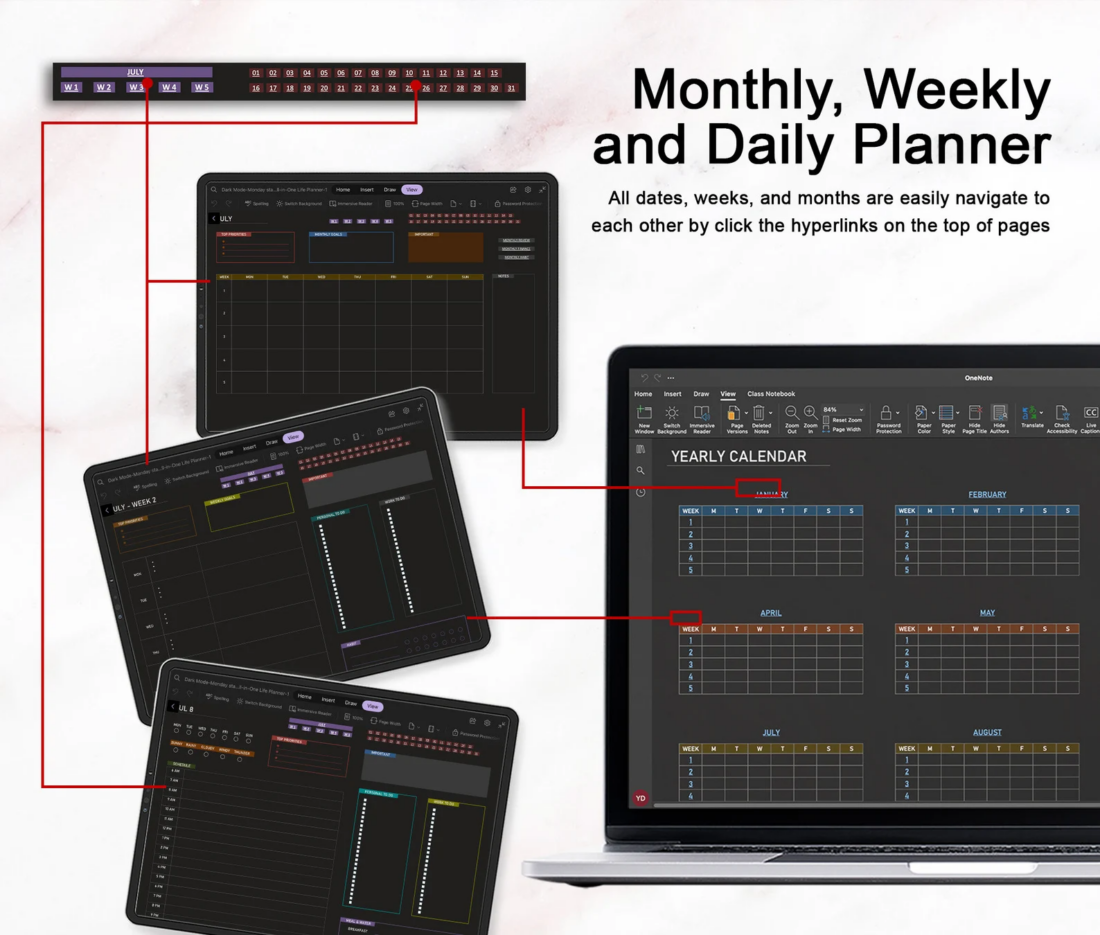
The objective of this workshop exercise is to help employees understand the importance of identifying and understanding their ideal customer’s needs and preferences in order to provide the very best brand experience. By putting themselves in their customer’s shoes and considering their wants, participants will learn how to create a customer-centric brand that resonates with their target audience.
9. Dating profile
In the online dating world, users craft the ideal profile in an attempt to ‘market’ themselves as a suitable dating option for their perfect match.

In this task, your brand is single and ready to mingle. Your goal is to get your target demographics to swipe right.
Split your team into smaller groups and ask them to create a compelling dating profile for your brand; make sure they include the following information:
- Tagline
- Bio
- Hobbies and interests
- Your ideal customer
- What you can offer in the relationship
- Strengths and weaknesses
- Include a group photo
- Brand differentiators

Once the groups have created their personalized dating profiles, ask each team to take on the persona of a key demographic of your brand and decide whether you would swipe left or right on each potential suitor.
The goal of this exercise is to help team members understand the key elements of effective branding by creating a captivating dating profile. By focusing on the brand’s unique qualities and presenting it in an appealing way, participants will learn how to build strong branding that stands out and attracts attention from your target audience.
10. Character takeover
Try not to get too excited, but your favorite fictional character is taking over your brand for an entire day.

The objective of this workshop activity is to help employees reimagine their brand by incorporating elements of an exaggerated fictional character persona. By engaging in a character takeover, participants will learn how to utilize the attributes, values, and influence of a fictional persona to enhance their brand’s image and connect with their target audience in a new and exciting way.
Ask your team to think of five fictional characters with differing personalities and consider what changes they would likely make to your brand.
For instance, Harry Potter is committed to social justice and fighting for what’s right, so he may invest in increasing the brand’s charitable endeavors. On the other hand, Batman is known for his advanced gadgets and technology. He would likely introduce innovative technological solutions to streamline your business processes and enhance overall efficiency.

Rebrand your branding
Throughout these numerous activities, you should have built a detailed branding template for your company going forward.
It is important to take these insights on board and utilize them in your branding throughout your entire business model, from customer outreach to launching new initiatives and products.
To ensure this rebranding approach remains consistent, we recommend one final task. As a team, develop a revised positioning statement that defines how your brand wants to be perceived in the minds of your target audience. This will ensure that all employees have an aligned goal that can guide branding throughout the company.


